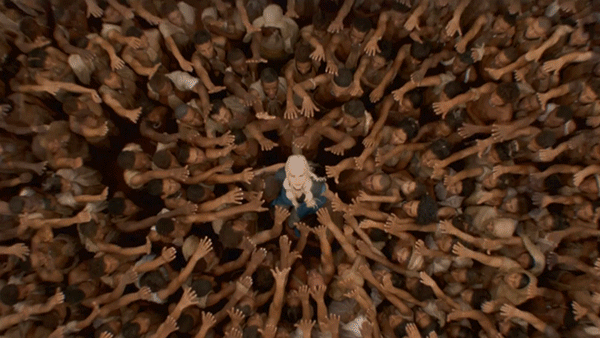The Connection Between Game of Thrones and Mystic Poetry
Omid Safi on GOT's flawed characters and its challenges in portraying violence

 Death is in the air, or rather just outside the wall. This week it’s likely that we’ll be saying goodbye to some beloved Game of Thrones characters, that is unless they rise again to fight their old friends on behalf of the Night King.
Death is in the air, or rather just outside the wall. This week it’s likely that we’ll be saying goodbye to some beloved Game of Thrones characters, that is unless they rise again to fight their old friends on behalf of the Night King.
Violence in battle and on the domestic front has been one of the themes of the show from the start. Omid Safi, professor of Asian and Middle Eastern Studies and director of the Duke Islamic Studies Center, is a fan of the show, which might be unexpected since his work often explores how violence leaves both people and societies scarred.
However, Safi, a specialist in Islamic mysticism and contemporary Islamic thought also sees appealing connections between the humanity he finds in the show’s characters and the ideas expressed in his favorite writers. Below, he talks about those connections and the strengths (and weaknesses) of how the show portrays violence and issues such as race and ethnicity.
Q: Let’s start with a topic close to your heart: The poetry of Islamic mystics. Why GOT, either in Martin’s books and the TV series, appeal to you? I mean it’s a pretty long distance between GOT and Runi and other similar writers, isn’t it?
SAFI: As a professor of religious traditions, I am drawn to these because they work with flawed human characters. Unlike something like “Lord of the Rings,” where you see who the “good guys” are and the Orcs are largely nameless, mob of evil beings, in GOT we have lots of character flaws, development, redemption, tragedy, suffering, unexpected valor, and more. Rumi (there is a connection!) says that every one of us is a jackass, with wings of angels tacked on. And that’s a good starting place for thinking through the characters in GOT.
“Rumi says that every one of us is a jackass, with wings of angels tacked on. And that’s a good starting place for thinking through the characters in GOT. ”
-- Omid Safi
Q: But you also care about issues of class, ethnic and racial differences. Could you pick one theme along those lines and briefly use one scene or moment from the series that told you something interesting about that them.
SAFI: Here I think GOT does less perfectly. Some of the groups depicted in GOT vaguely, vaguely map on to cultural imaginary that we have today of ancient cultures. The Mhysa episode, for example, was hard to watch as the ascension of a female white body over mass of black and brown people in ways that replicated so much of the politics and aesthetics of colonialism. (Below)

Khal Drogo seems to resemble the “tribal, savage and powerful” East. I personally associate it with pre-Islamic Arabia. Oberyn Martell and his group are Andalusians, Muslim-ruled Spanish. There is passion, elegance, poetry, panache, and an abundant sensuality. Even the scenery for the Martell tribe was shot in Seville. And, of course, many of the characters resemble our notions of what a vaguely medieval Europe might have been like.
Q: Finally, your work has also looked at issues of torture, terror and human rights abuses, all of which are prominent in the show. Do you think GOT deals with these issues honestly? Does it reflect anything about our ability to act on these issues, positively or negatively?
SAFI: A common criticism of the show has been the way that it indulges in violence and indeed misogyny. Toward the middle of the series, both of the elements were true, particularly the misogyny towards almost all the female characters, most of whom had been raped. To some extent the series has redeemed itself, with seeing the female characters re-assert themselves. Still, there are probably 4-5 male characters for every female character.
As for torture, I do think that there has been quite a lot of time spent on it. I wish there were a bit more focus on the heroic and valor. People often compare GOT with the Turkish show Ertugrul, which is much more focused on chivalry and heroic chivalry.

While not quite about torture, one of the most moving shows for me was the “Battle of the Bastards.” The way Jon Snow was trapped under a mountain of human corpses and mud was one of the most moving and powerful cinematic depictions of the horrors of war. In fact, GOT episodes for me often far surpass anything that is showing in the movie theaters. The “Spoils of War” episode almost makes war look…. Grand.
Q: The big question: Who do you think will end the series on the throne? Who do you hope ends on the throne?
SAFI: #TeamJonSnow all the way!
Read the previous stories in our Game of Thrones series here.